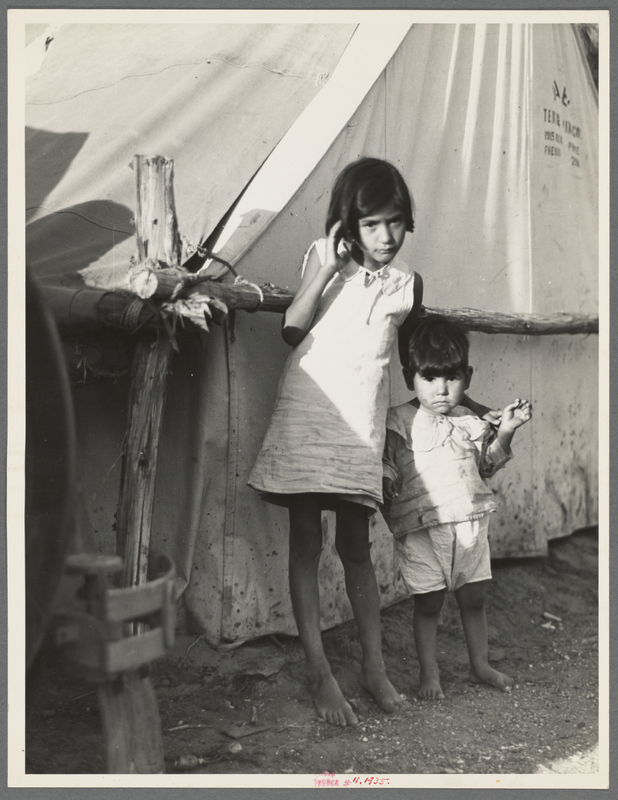Growing Concerns: Child Labor, Health Issues, and Inner Conflict
The photo above taken by American photographer Dorothea Lange captures two young migrant children in California who, despite their ages, might still have worked in the fields alongside their parents. Mexican migrants frequently traveled in families. Relaxed labor laws allowed migrant children to work in the fields and support their families, which was often a necessity due to very low wages. Take a moment to consider the appearance of the children in the photo, especially their bare feet and soiled clothing. These features of the image highlight the poor living conditions that migrant workers endured and the low wages which made clothing a luxury. Children faced the same issues as adult workers, including physically demanding work, limited breaks, and exposure to dangerous chemicals. Because of the seasonal nature of their work, many families did not stay in the same fields for very long, which resulted in struggles for migrant children to socialize and make lasting friendships. Youth also faced internal conflict between their Mexican roots and American identities, which they later discussed in Civil Rights movements of the 1960s, such as the Chicano Movement.
The United Farm Workers organization comissioned a Documentary titled ¡Huelga! in 1966 to raise awareness about issues faced by farm workers in the United States. The video above is a clip from this documentary and focuses on living conditions, the experiences of migrant children, and the 1966 strikes. At the start of the clip, you will hear from a farm owner who denies any of the struggles experienced by migrant workers and asserts that their workers do not want representation. You will also hear firsthand accounts from one migrant worker as he demonstrates the concerns of his fellow workers and shares his own story of growing up in the fields.
Health issues were prevalent among migrant workers due to the physically demanding nature of their work and the deadly chemicals that they came into contact with. Back issues and other physical ailments were common among migrant workers, as well as respiratory issues caused by pesticides like DDT. The oral interview above titled "Pesticides Kill Farmworkers" captures Cesar Chavez's experience with the dangers of pesticide use in the fields. It also contains his reflection on the important work that the United Farm Workers did to eliminatethe use such chemicals. At the time of this interview in 1990, researchers were doing important work to study the “cancer clusters” emerging in agricultural hubs throughout the American Southwest. Chavez discusses how these researchers used their findings to support migrant workers who lobbied for the ban of DDT and other popular pesticides.
